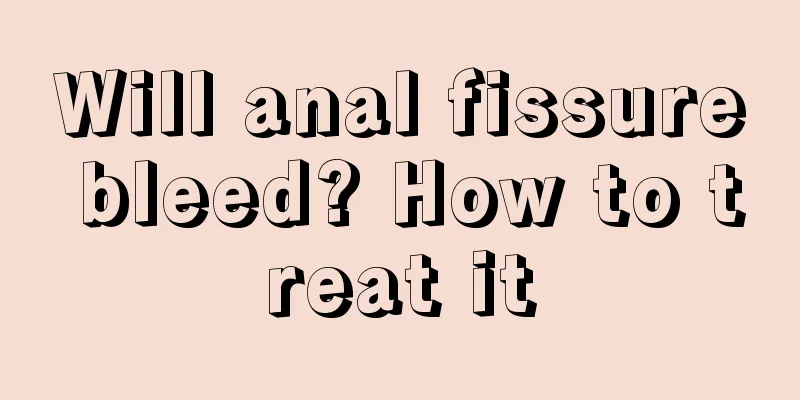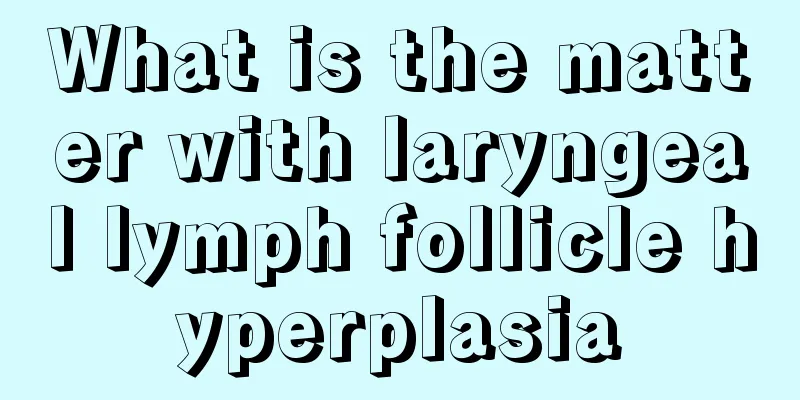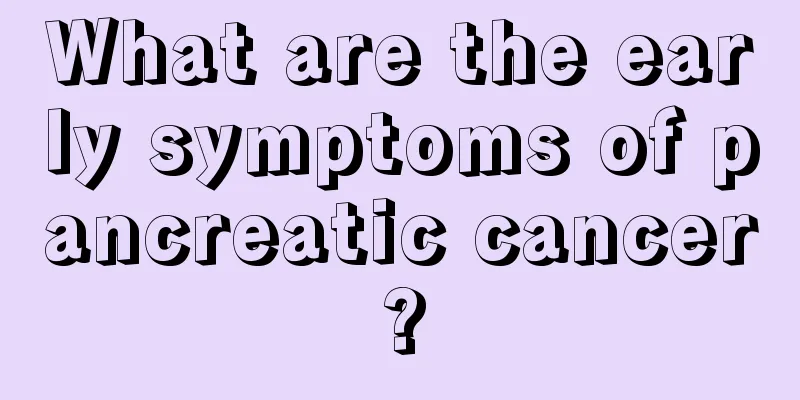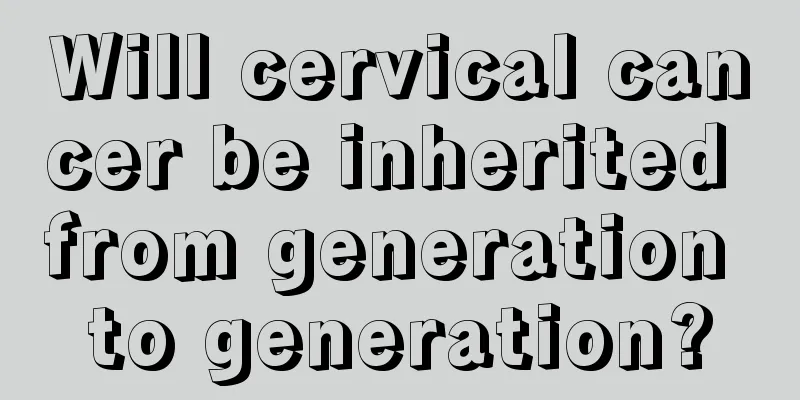Will anal fissure bleed? How to treat it

|
Friends who suffer from anal fissures must take correct diet therapy and care in time. Otherwise, if treatment is delayed and the disease becomes serious, there will be heavy bleeding, and bacteria can easily enter the body through the wound, leading to other diseases. 1. Keep bowel movements smooth Take laxatives orally to make stools soft and lubricated, increase the intake of high-fiber foods and change bowel habits, and gradually correct the occurrence of constipation. 2. Local sitz bath Take a sitz bath with 1:5000 warm potassium permanganate solution before and after defecation to keep the area clean. 3. Anal canal dilation Suitable for patients with acute or chronic anal fissures without complications of papillary hypertrophy and sentinel piles. The advantages are that it is easy to operate, does not require special equipment, has a rapid effect, and only requires a daily sitz bath after the operation. Method: After local anesthesia, the patient takes a lateral position and first uses the two index fingers to forcefully dilate the anal canal, then gradually inserts the two middle fingers and maintains dilation for 5 minutes. Men should expand forward and backward to avoid contact between fingers and ischial tuberosity, which would affect expansion. Women have a wider pelvis and do not have this problem. After the anal canal is dilated, the spasm of the anal sphincter can be eliminated, so the pain can be relieved immediately after the operation. After dilation, the anal fissure wound expands and opens, drainage is unobstructed, and the superficial wound can heal quickly. However, the disadvantage of this method is that it may cause complications such as bleeding, perianal abscess, hemorrhoidal prolapse and short-term fecal incontinence, and the recurrence rate is relatively high. 4. Topical application of nitroglycerin ointment Lund et al. (1997) reported the use of 0.2% nitroglycerin ointment applied to anal fissures twice a day for 4 to 6 weeks. The results showed that 20 minutes after medication, the maximum resting pressure of the anal canal dropped from 122.1±44cmH2O to 72.5cmH2O, which is equivalent to a one-time "chemical sphincterotomy". 39 cases of chronic anal fissures were treated, 33 were cured, 14 of which were cured within 4 weeks; the pain during defecation disappeared within 2 weeks; 5 cases relapsed, 4 of which were cured after re-administration of the medicine; no case of anal incontinence occurred, but 8 cases had mild pain during treatment. This method is a better non-surgical method for treating chronic anal fissure, but it still requires randomized controlled and long-term follow-up studies of large numbers of cases. |
>>: What should I do if I often have eye mucus
Recommend
How long can you live with advanced pancreatic cancer
The prognosis of advanced pancreatic cancer varie...
What are the examinations that need to be done before lung cancer surgery? Four examinations before lung cancer surgery are must-do items
The air we breathe is now very polluted, mainly b...
Symptoms and treatment methods of aconite poisoning
We also call aconite "fupian" or "...
Will hot springs make you get angry?
The weather is cold in winter and people are tire...
What causes peeling of finger joints?
The finger joints are very flexible and can help ...
What are the diets that can prevent liver cancer? If you have these symptoms, be careful of liver cancer
What are the symptoms of liver cancer? Liver canc...
What is the reason for increased appetite in late stage liver cancer? Introduction to treatment methods for late stage liver cancer
Patients with advanced liver cancer may experienc...
What medicine to take for rhinitis and pharyngitis
There are many patients with rhinitis in our live...
What fruits are good for the elderly with osteosarcoma?
Although osteosarcoma often occurs in young peopl...
What is the solution to facial abrasions
If you accidentally scratch your face, you must p...
Can I have sex 3 months before pregnancy?
Different people have different opinions on wheth...
What fruits go together with pears to make juice?
People's lives are more convenient nowadays. ...
What's wrong with my old toothache
As the saying goes, toothache is not a disease, b...
What causes numbness in the thumb?
Our human body is a sophisticated machine, and ev...
How can I avoid acne? How to prevent
Acne is a common skin problem. Many people are pr...









